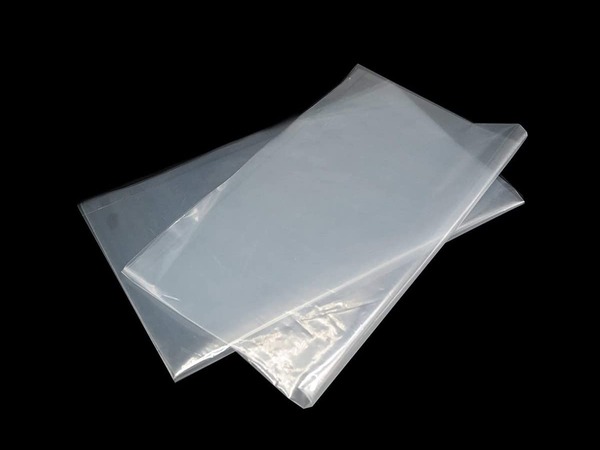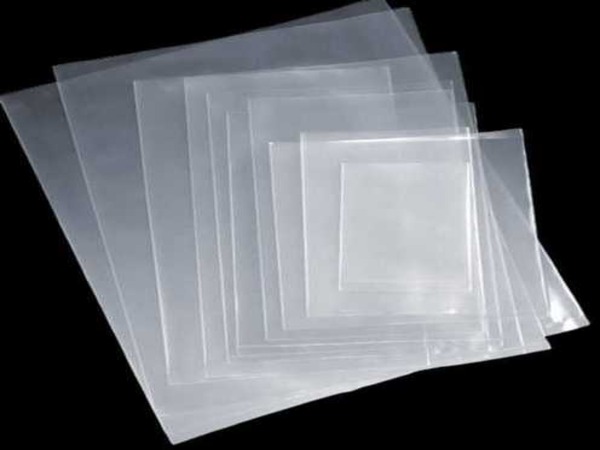What is LDPE Polybag?
“LDPE polybag refers to a polyethylene bag made from low-density polyethylene (LDPE) material. LDPE is a type of thermoplastic that is known for its flexibility and durability, making it a popular choice for packaging applications. LDPE polybags are widely used for packaging a variety of products such as food, clothing, electronics, and medical supplies. LDPE polybags are known for their strength, puncture resistance, and ability to resist tearing, making them ideal for packaging products that require protection from damage during shipping and handling. They are also lightweight, which makes them a cost-effective packaging solution for businesses. LDPE polybags can be manufactured in different sizes, thicknesses, and colors to suit the specific needs of a particular product or application. They can be printed with custom designs or branding to increase brand recognition and add an aesthetic appeal to the packaging. LDPE polybags are also known for their environmental friendliness. They are recyclable and can be reused multiple times, reducing the environmental impact of packaging waste. However, it is important to properly dispose of LDPE polybags to ensure they are recycled correctly and do not contribute to environmental pollution.”
History of LDPE Polybag in Brief Below:
The history of LDPE polybag dates back to the 1930s when the first polyethylene resin was developed by a team of researchers at Imperial Chemical Industries (ICI) in the UK. Polyethylene is a type of plastic that is widely used for packaging applications due to its durability, flexibility, and low cost.
In the 1950s, a new type of polyethylene, known as low-density polyethylene (LDPE), was developed. LDPE had a lower density than traditional polyethylene, making it more flexible and transparent, and it quickly became a popular choice for packaging applications.
The use of LDPE polybags became widespread in the 1960s and 1970s as the demand for plastic packaging increased. They were seen as a more cost-effective and versatile alternative to traditional paper and cloth packaging materials. The flexibility and strength of LDPE polybags made them ideal for packaging a variety of products, including food, clothing, and household items.
However, with the rise of environmental concerns in the 1980s and 1990s, the use of LDPE polybags became a topic of debate. The non-biodegradable nature of plastic packaging and its impact on the environment became a concern, and many countries began to introduce regulations to restrict or ban the use of single-use plastic bags.
Today, LDPE polybags remain a widely used packaging material but are often used in conjunction with more sustainable options such as reusable bags and eco-friendly packaging materials. Many manufacturers have also introduced biodegradable or compostable versions of LDPE polybags to reduce their environmental impact.
Making of LDPE Polybag in Brief Below:
LDPE polybags are made through a process called extrusion. Here are the basic steps involved in the making of LDPE polybags:
Resin Preparation: The first step involves preparing the resin for extrusion. The LDPE resin is heated and mixed with additives such as colorants and stabilizers to enhance its properties.
Extrusion: The prepared resin is then fed into an extruder machine where it is melted and forced through a die to form a tube of molten plastic. The diameter of the tube is determined by the size of the die.
Bag Formation: The tube of molten plastic is then passed through a series of rollers that flatten and cool the plastic. The flattened plastic is then folded in half and cut to form a flat sheet of plastic. This sheet is then fed into a bag-making machine where it is sealed along the sides and bottom to form a bag. The top of the bag is left open to allow for the insertion of the product.
Printing and Finishing: Once the bag is formed, it can be printed with custom designs or branding using a printing press. The bags can also be finished with handles or other features to enhance their functionality.
Packaging and Shipping: The finished bags are then packaged and shipped to retailers, wholesalers, or other customers.
LDPE Polybag Benefits
LDPE polybags offer several benefits that make them a popular choice for packaging applications. Here are some of the key benefits of LDPE polybags:
Durability – LDPE polybags are highly durable and can withstand rough handling, punctures, and tearing. They provide a protective barrier that helps to keep the product safe from damage during transportation and storage.
Flexibility – LDPE polybags are flexible and can be easily manipulated to fit a wide range of product shapes and sizes. They can also be folded and stored easily, which makes them a convenient packaging option for businesses.
Cost-effective –LDPE polybags are a cost-effective packaging solution compared to other materials such as paper and cloth. They are easy to produce in large quantities and require minimal processing, which reduces production costs.
Lightweight – LDPE polybags are lightweight, which reduces the overall weight of the packaged product. This can result in lower transportation costs and a reduced carbon footprint.
Customizable – LDPE polybags can be printed with custom designs, logos, and branding, which can help to increase brand recognition and add an aesthetic appeal to the packaging.
Hygienic – LDPE polybags are a hygienic packaging option that helps to keep the product free from contamination and moisture.
Recyclable – LDPE polybags are recyclable and can be repurposed into a variety of products such as trash bags and plastic lumber. This reduces the amount of plastic waste that ends up in landfills and oceans.


Specifications:
| Material : | LDPE (Low-density polyethylene) is the primary material used to make LDPE polybags. |
| Size : | The size of LDPE polybags can vary widely, depending on the product being packaged. Common sizes include small sizes for packaging individual items, medium sizes for general-purpose use, and large sizes for bulk packaging. |
| Thickness: | The thickness of LDPE polybags can also vary depending on the intended use. Thicker bags are generally more durable and provide more protection for the product. The thickness of LDPE polybags is typically measured in microns (μm) or mils (thousandths of an inch). |
| Color : | LDPE polybags can be made in a range of colors, including clear, opaque, or tinted colors. Colored bags can be used to differentiate between products or to add a branding element to the packaging. |
| Closure : | LDPE polybags can be made with various closure options, including zip-lock, drawstring, or heat-sealed closures. |
| Printing: | LDPE polybags can be printed with custom designs, logos, or branding using a variety of printing methods, including flexography, rotogravure, or digital printing. |
| Additional features: | LDPE polybags can be made with additional features such as handles, vents, or perforations to enhance their functionality. |